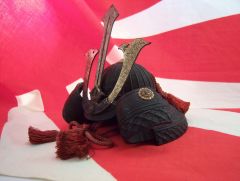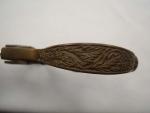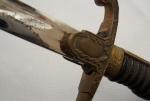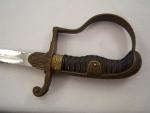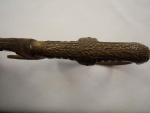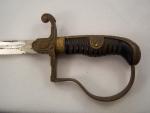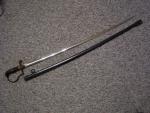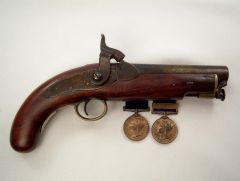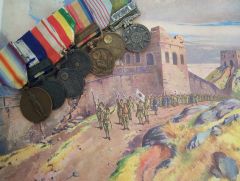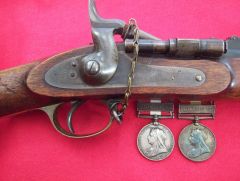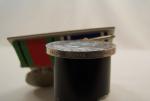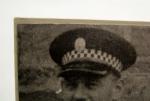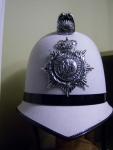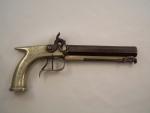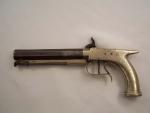-
Posts
6,486 -
Joined
-
Last visited
-
Days Won
10
Content Type
Profiles
Forums
Blogs
Gallery
Events
Store
Everything posted by Brian Wolfe
-

Shedding Light on the Crime
Brian Wolfe commented on Brian Wolfe's blog entry in News From the Home Office.
Thanks Mervyn. I, like the rest of the members, can always count on you. Regards Brian -
Shedding Light on the Crime; not a bedtime story. Abysmal was the only word to describe this moonless overcast autumn night. The neighbourhood had been forgotten by society, polite society that is. The street lights were old and outdated. New lights found in the up-scale areas would never see this neighbourhood, not even when they were felt to be out of style. The lights would be sold to smaller municipalities; never to be installed here. Many of the lights were out, shot out by pellet guns making the darkness here purposeful and with an intent repulsive to gentler folk. This the city planners called “Urban Blight”, however in more knowledgeable circles where actual “doing” was the norm was whispered a different term. “Ghettoization of the Poor” was the term bantered around, a purposeful concentration of those less fortunate to serve as fodder, victims if you will, to the criminal element. After all as long as you can ignore an area in decline thereby creating a hunting ground for the wolves of society the chances are less likely that they will ply their trade in the white bread world of “up-town”. This is nothing new and every city has their Cedar Street, corner of St. Ledger and Young and “Shooters Lane”. This will never change as high speed commuter train systems are more important than the welfare of our fellow man. It truly is still a Dickensian world. Along with the blinded street lights very little other light was visible short of the odd window through which an eerie sporadic pulsating glow emitted from a television set. One or two upstairs windows were lit up and there existed hope that in the room was a small desk with a young child who was pouring over his or her lessons with the slight hope of earning their way out of this cess pool. Experience, however, told a different likelihood. That of a single mattress thrown on the floor where a lady of the evening carried on her so-called trade in order to earn just enough for the next hit of crack, smoked using a crushed soda can as a pipe and a butane cigarette lighter as the ignition source. She was old before her time, even though she was barely out of her teens, just more collateral damage in the political gaming circles. The house in question had long past being described as run down and old. It was an ancient pile or half rotten timbers and broken window panes awaiting the caress of the arson’s touch. A sure fate when the property became more valuable than the rent squeezed by the slumlord from these poor retches. Still it was someone’s home and castle, their refuge from the greater decay looming all around in the darkness. Paint had long since given up trying to make a home on the building’s exterior and what did still reside there was in flakes peeling off as if it too were trying to follow after its comrades to a better existence. The front steps had long since given up being even close to horizontal and the wooden treads were bowed downwards as if the stress of thousands of desperate souls treading on them had been too depressing for them and they now just existed without the will to live. Under the porch could be heard a rustling scurrying sound of creatures best left unseen and unmolested least their unwanted attentions be turned loose on the inquisitive interloper. On the corner of the porch next to a very narrow unpaved driveway, was a square-based tapering pillar holding up the porch roof with the house number 23 affixed to it. The letters had been of good quality at one time, enameled white letters on a metal base. Now they were missing much of the enameling with what was left being stained yellow by the rusting medal. Under the letters was nailed a board with little to no regard to right angles or even an attempt to be slightly horizontal. On the board was scrawled the words, “23½ ROUND BACK!” by someone obviously sick and tired of being inconvenienced to give out directions to 23½. “Why is it always ‘round back?” The driveway was put in long after the house had been built, before Henry Ford’s creations, constructed to accommodate the Model T or Model A automobiles of the day. It had gone unused due to its lack of width through the craze for super sized automobiles and the muscle cars. A Smart Car would now fit but that would never be seen in this neighbourhood. The driveway was equally dark and uninviting ending with a dilapidated garage, more than a mate for the ailing house. The sill had long ago rotted away and the vertical wood siding was now all that held the structure erect. The sides themselves bowed out leaving the structure resembling a circus tent more than an accessory building. The sound of a dog barking in the distance could be heard but it sounded to be a few doors over. No barking came from this property in response to the other dog’s challenge so that may not be an issue here. “At least it’s not the end of the shift.” There was a superstition among the officers in the division that if all went well for your whole shift then the last call was likely going to be the most dangerous. If you were going to “buy it” then that was when it would happen. This caution was probably started to keep the new officers on their toes. As the biggest factor in any officer’s injury or death is quite often complacency. Taking a deep breath the summons firmly in the officer’s leather encased Kevlar gloved left hand, he drew his right hand back past the Asp (extendable baton), undoing the dome on his 9 mil. holster and finally coming to resting on his three-cell Mag-Lite. He preferred the Mag over the stronger beam of the mini flashlights carried by some of the younger officers. The reason was simple, deadly simple. A Mag might not be able to blind a charging rhino or fry ants at fifty feet such as the young officers bragged about their mini lights, but it gave sufficient light and could serve, as it had on several occasions, as a defensive “weapon of opportunity”. Here is the simple logic. When something “goes down” you have 1.5 seconds to react. So, 1.5 seconds to drop your mini flashlight, un-holster your 9 mill (did you remember to unfasten it earlier?), snap off the safety, point it at the assailant and come up with a memorable line out of a Dirty Harry or Rambo movie and save your butt. All in 1.5 seconds...won’t happen sweetheart! At least with the Mag-Lite in hand you have something, well, at hand, what you do in the next 1.5 seconds is up to you. “Thank God for my Mag-Lite” The officer had seen just about every kind of trap and trip fall over the years. From boards with nails protruding waiting like some spiny sea urchin in the dark waters of night, to impale any unwary pedestrian venturing into their domain, to trip wires set across the top of exterior basement access stairways. The lights at the bottom of these egress wells were always “conveniently” out of order. The one that always stuck in his mind was one basement apartment access stairs, as usual in complete darkness, that had a row of soda cans sitting along the front edge of one of the treads, about one half way down the stair case. Stepping on top one or two of these cans would send you down the stairs on your backside in a flash. The worst were concrete stair cases. Then there were the “screamers”. Battery powered alarms that emitted a sharp whine so loud as to nearly split an ear drum and the fright enough to bring on a heart attack, or at least it seemed so. These were attached to one side of the stair case, a monofilament line stretched across the stair way. These were activated similar to a hand grenade with a pin being pulled out when someone tripped the line. If there was one thing in abundance in this neighbourhood it was human ingenuity, whether protective or malicious. Reaching the back corner of the main house there was a smaller structure attached, probably a former kitchen with accommodation for the “help” dating back to more affluent times. The porch light was off but the window beside the door was lit up. As he scanned the property and especially the path to the door he noticed that the only potential traps were those of children’s toys reluctantly left when “time for bed” was announced. He could imagine the protests of the young adventurers as their mother put an end to their conquests of the imagined castle or the slaying of the evil dragon. Some things common to children everywhere is their ability to ignore brutal reality in favour of their own worlds of make believe. This made him smile slightly. Reaching the entrance the officer opened the screen door and knocked on the old paint cracked wooden slab. He actually lightly kicked the door with the toe of his shoe but it was still a knock. Immediately the light was turned off that had illuminated the window and the porch light was snapped on. The officer instinctively shut the screen door which he braced closed with his foot; toe on the door and heel firmly against the decking of the porch. This was the moment of truth, the seconds before the bull charges the matador or the moment before when all is revealed, the expected raging bull or a peaceful member of the heard. A woman opened the door; it was hard to tell her age due to the lack of light as she stayed in the shadows afforded by the frame of the screen door. It didn’t matter at this time as the officer could see that she held nothing in her hands and shining the flashlight’s beam in her face would only serve to annoy more than identify..at least for the time being. “Is Mr. Larry Oatman living at this address?” “Yes, I’m his wife”, she offered without hesitation and offered her full name and date of birth following the officer’s request. “Please give this to him” the officer calmly said in a helpful tone of voice practised to garner cooperation. “What is this?” She queried as she instinctively reached out and took the document. This happens more than not when serving a summons which is helpful though in Canada there is no need to actually touch the person with the summons to complete service. “It’s a Summons for Mr. Oatman to appear in court” She accepted this with a look of someone familiar with the term recidivism; the cycle of conviction followed by incarceration, release and another crime leading to arrest and conviction. This time all went down smoothly and peacefully. It is not always so, but one needs to be thankful for small favours and not dwell on the times when you’re met with violence. Back in the patrol car the officer couldn’t help but think that this cycle of crime, incarceration, release then crime was like the instructions, wash, rinse, and repeat on the label on a shampoo bottle being applied to life. He also couldn’t help but wonder if this was always going to be the case for many in this part of the city. Deep down he knew the answer to his own question. This is a scenario played out over and over day after day year after year all over the country. In most cases there is no need for a firearm, the asp is not drawn or the pepper spay not released into an assailant’s eyes. However it’s the trusty old flashlight that is employed repeatedly. So it has been since the days of the watchmen with their burning brands, or torches, the candle lit lamps followed in time by oil fueled and then to battery powered lights, shedding light on crime and making it safer for officers to carry out their duties. Watch this space for more on this subject as time goes by with specimens from the Victorian Period to more resent times. Regards Brian
-
Shedding Light on the Crime; not a bedtime story. Abysmal was the only word to describe this moonless overcast autumn night. The neighbourhood had been forgotten by society, polite society that is. The street lights were old and outdated. New lights found in the up-scale areas would never see this neighbourhood, not even when they were felt to be out of style. The lights would be sold to smaller municipalities; never to be installed here. Many of the lights were out, shot out by pellet guns making the darkness here purposeful and with an intent repulsive to gentler folk. This the city planners called “Urban Blight”, however in more knowledgeable circles where actual “doing” was the norm was whispered a different term. “Ghettoization of the Poor” was the term bantered around, a purposeful concentration of those less fortunate to serve as fodder, victims if you will, to the criminal element. After all as long as you can ignore an area in decline thereby creating a hunting ground for the wolves of society the chances are less likely that they will ply their trade in the white bread world of “up-town”. This is nothing new and every city has their Cedar Street, corner of St. Ledger and Young and “Shooters Lane”. This will never change as high speed commuter train systems are more important than the welfare of our fellow man. It truly is still a Dickensian world. Along with the blinded street lights very little other light was visible short of the odd window through which an eerie sporadic pulsating glow emitted from a television set. One or two upstairs windows were lit up and there existed hope that in the room was a small desk with a young child who was pouring over his or her lessons with the slight hope of earning their way out of this cess pool. Experience, however, told a different likelihood. That of a single mattress thrown on the floor where a lady of the evening carried on her so-called trade in order to earn just enough for the next hit of crack, smoked using a crushed soda can as a pipe and a butane cigarette lighter as the ignition source. She was old before her time, even though she was barely out of her teens, just more collateral damage in the political gaming circles. The house in question had long past being described as run down and old. It was an ancient pile or half rotten timbers and broken window panes awaiting the caress of the arson’s touch. A sure fate when the property became more valuable than the rent squeezed by the slumlord from these poor retches. Still it was someone’s home and castle, their refuge from the greater decay looming all around in the darkness. Paint had long since given up trying to make a home on the building’s exterior and what did still reside there was in flakes peeling off as if it too were trying to follow after its comrades to a better existence. The front steps had long since given up being even close to horizontal and the wooden treads were bowed downwards as if the stress of thousands of desperate souls treading on them had been too depressing for them and they now just existed without the will to live. Under the porch could be heard a rustling scurrying sound of creatures best left unseen and unmolested least their unwanted attentions be turned loose on the inquisitive interloper. On the corner of the porch next to a very narrow unpaved driveway, was a square-based tapering pillar holding up the porch roof with the house number 23 affixed to it. The letters had been of good quality at one time, enameled white letters on a metal base. Now they were missing much of the enameling with what was left being stained yellow by the rusting medal. Under the letters was nailed a board with little to no regard to right angles or even an attempt to be slightly horizontal. On the board was scrawled the words, “23½ ROUND BACK!” by someone obviously sick and tired of being inconvenienced to give out directions to 23½. “Why is it always ‘round back?” The driveway was put in long after the house had been built, before Henry Ford’s creations, constructed to accommodate the Model T or Model A automobiles of the day. It had gone unused due to its lack of width through the craze for super sized automobiles and the muscle cars. A Smart Car would now fit but that would never be seen in this neighbourhood. The driveway was equally dark and uninviting ending with a dilapidated garage, more than a mate for the ailing house. The sill had long ago rotted away and the vertical wood siding was now all that held the structure erect. The sides themselves bowed out leaving the structure resembling a circus tent more than an accessory building. The sound of a dog barking in the distance could be heard but it sounded to be a few doors over. No barking came from this property in response to the other dog’s challenge so that may not be an issue here. “At least it’s not the end of the shift.” There was a superstition among the officers in the division that if all went well for your whole shift then the last call was likely going to be the most dangerous. If you were going to “buy it” then that was when it would happen. This caution was probably started to keep the new officers on their toes. As the biggest factor in any officer’s injury or death is quite often complacency. Taking a deep breath the summons firmly in the officer’s leather encased Kevlar gloved left hand, he drew his right hand back past the Asp (extendable baton), undoing the dome on his 9 mil. holster and finally coming to resting on his three-cell Mag-Lite. He preferred the Mag over the stronger beam of the mini flashlights carried by some of the younger officers. The reason was simple, deadly simple. A Mag might not be able to blind a charging rhino or fry ants at fifty feet such as the young officers bragged about their mini lights, but it gave sufficient light and could serve, as it had on several occasions, as a defensive “weapon of opportunity”. Here is the simple logic. When something “goes down” you have 1.5 seconds to react. So, 1.5 seconds to drop your mini flashlight, un-holster your 9 mill (did you remember to unfasten it earlier?), snap off the safety, point it at the assailant and come up with a memorable line out of a Dirty Harry or Rambo movie and save your butt. All in 1.5 seconds...won’t happen sweetheart! At least with the Mag-Lite in hand you have something, well, at hand, what you do in the next 1.5 seconds is up to you. “Thank God for my Mag-Lite” The officer had seen just about every kind of trap and trip fall over the years. From boards with nails protruding waiting like some spiny sea urchin in the dark waters of night, to impale any unwary pedestrian venturing into their domain, to trip wires set across the top of exterior basement access stairways. The lights at the bottom of these egress wells were always “conveniently” out of order. The one that always stuck in his mind was one basement apartment access stairs, as usual in complete darkness, that had a row of soda cans sitting along the front edge of one of the treads, about one half way down the stair case. Stepping on top one or two of these cans would send you down the stairs on your backside in a flash. The worst were concrete stair cases. Then there were the “screamers”. Battery powered alarms that emitted a sharp whine so loud as to nearly split an ear drum and the fright enough to bring on a heart attack, or at least it seemed so. These were attached to one side of the stair case, a monofilament line stretched across the stair way. These were activated similar to a hand grenade with a pin being pulled out when someone tripped the line. If there was one thing in abundance in this neighbourhood it was human ingenuity, whether protective or malicious. Reaching the back corner of the main house there was a smaller structure attached, probably a former kitchen with accommodation for the “help” dating back to more affluent times. The porch light was off but the window beside the door was lit up. As he scanned the property and especially the path to the door he noticed that the only potential traps were those of children’s toys reluctantly left when “time for bed” was announced. He could imagine the protests of the young adventurers as their mother put an end to their conquests of the imagined castle or the slaying of the evil dragon. Some things common to children everywhere is their ability to ignore brutal reality in favour of their own worlds of make believe. This made him smile slightly. Reaching the entrance the officer opened the screen door and knocked on the old paint cracked wooden slab. He actually lightly kicked the door with the toe of his shoe but it was still a knock. Immediately the light was turned off that had illuminated the window and the porch light was snapped on. The officer instinctively shut the screen door which he braced closed with his foot; toe on the door and heel firmly against the decking of the porch. This was the moment of truth, the seconds before the bull charges the matador or the moment before when all is revealed, the expected raging bull or a peaceful member of the heard. A woman opened the door; it was hard to tell her age due to the lack of light as she stayed in the shadows afforded by the frame of the screen door. It didn’t matter at this time as the officer could see that she held nothing in her hands and shining the flashlight’s beam in her face would only serve to annoy more than identify..at least for the time being. “Is Mr. Larry Oatman living at this address?” “Yes, I’m his wife”, she offered without hesitation and offered her full name and date of birth following the officer’s request. “Please give this to him” the officer calmly said in a helpful tone of voice practised to garner cooperation. “What is this?” She queried as she instinctively reached out and took the document. This happens more than not when serving a summons which is helpful though in Canada there is no need to actually touch the person with the summons to complete service. “It’s a Summons for Mr. Oatman to appear in court” She accepted this with a look of someone familiar with the term recidivism; the cycle of conviction followed by incarceration, release and another crime leading to arrest and conviction. This time all went down smoothly and peacefully. It is not always so, but one needs to be thankful for small favours and not dwell on the times when you’re met with violence. Back in the patrol car the officer couldn’t help but think that this cycle of crime, incarceration, release then crime was like the instructions, wash, rinse, and repeat on the label on a shampoo bottle being applied to life. He also couldn’t help but wonder if this was always going to be the case for many in this part of the city. Deep down he knew the answer to his own question. This is a scenario played out over and over day after day year after year all over the country. In most cases there is no need for a firearm, the asp is not drawn or the pepper spay not released into an assailant’s eyes. However it’s the trusty old flashlight that is employed repeatedly. So it has been since the days of the watchmen with their burning brands, or torches, the candle lit lamps followed in time by oil fueled and then to battery powered lights, shedding light on crime and making it safer for officers to carry out their duties. For quite some time now my good friend and fellow GMIC member, Mervyn Mitton and I have been discussing a collaboration of sorts to expand one of his earlier posts, regarding early police lanterns. This will involve specimens from both of our collections and a detailed description along with photos of the different specimens. I anticipate this taking some time as between the two of us we possess quite a good number of examples. In addition to this blog I will kick the project off with a “What do they have in common?” question. Sorry, no prize for the correct answer or even the wittiest response; just bragging rights. Which I suppose could be considered “priceless”. Watch for the knowledge testing question coming to the appropriate section of your form shortly. Then tune into the police section to follow our post on police lanterns. Thanks for taking the time to read my blog and I hope that you found it entertaining and will check out our Police Lantern post in the Police Section under the title “What did they do in the dark...”. Regards Brian
-

Imperial Japanese Navy Officer's Award
Brian Wolfe posted a gallery image in Category 1: Personal Collections
1939 Imperial Japanese Navy Officer’s Award in the form of a Samurai Kabutu (Helmet). The maedate (crest) is marked HATTORI SEI (made by Hattori). Hattori was responsible for various Imperial Japanese Navy awards and is now known as The Seiko Watch Company. The inside of the helmet reads, SHOWA 12 NEN (1939) and KAUGUN KENTI HOUSHOU (Navy Officer Examination Merit Award). -
A shot of the front of the knuckel bow and the manufacturer's trade mark, which is fairly common. I've always said that value was secondary to me but in this case I don't want to cheat a friend or pay twice what it is worth out of my own ignorance. This fellow and I haunt gunshows together so a fair offer is even more importantfor both of us. Regards and thanks again. Brian
-
Third Reich Parade Sword. A friend of mine brought in this Third Reich period sword that his late father brought back from WWII. He’s not sure if he wants to keep it or not and since it has been years since I purchased any German swords I have no idea of the value There is light pitting all along blued steel scabbard and quite deep rusted areas along the six inches of the blade just above the hand guard. I’ve seen this many times with swords brought back from the wars and then stored in the closet for decades. Any help with the identification and value would be appreciated. I’m looking for a value between dealer’s table-price and wholesale so that if he decides to sell I can make him an offer fair to both of us. I’ve tried to show the manufacturer’s mark in the last photo. Thanks again for any assistance you can give me. Regards Brian
-
Welcome to the forum Chris. Regards Brian
-

Victorian POlice Pistol and Jubilee Medals
Brian Wolfe posted a gallery image in Category 1: Personal Collections
In the mid 1800’s the Metropolitan London Police were issued both firearms and swords when the need arose, such as in times of civil unrest. The pistol shown was most likely made in Birmingham in the 1840’s and was commonly known as a “man-stopper” with its 20mm-wide bore. The medals shown are the 1887 Jubilee and the 1887 with 1897 bar which was issued to officers who had already received the 1887 Jubilee medal. There is also a separate medal for the 1897 Jubilee for those who had not received the 1887 medal, however it has the same obverse as the ones show so I didn’t include it here. -

A Group of Japanese Medals WWI to WWII
Brian Wolfe posted a gallery image in Category 1: Personal Collections
This group of medals, awarded to an unknown Japanese soldier, spans the conflicts of the first half of the 20th century. This servicemen’s career started with the First World War and, as indicated by the Great East Asia War, medal he survived the Second World War as well. The Medals are (from left to right), Inter Allied Victory Medal (1920), 1914-20 War Medal (1920),Taisho Enthronement (1915), Showa Enthronement (1928), China Incident (1939), 2600th National Anniversary (1940), Great East Asia War (1944). The group is resting on a propaganda print form the Second World War Period, one of several in a series, which shows the Victorious Japanese Army at the Great Wall of China. -

.577 Snider-Enfield and Fenian Raid Medals
Brian Wolfe posted a gallery image in Category 1: Personal Collections
-
Hello Robin, Thank you for the information. As I mentioned I had hoped that the photo was going to be clearer than it is. Internet photos and especially those on sites like eBay are not of the best quality at times. I cannot be sure that the photo and the medals belong together. As you say there is no sign of a ribbon bar on the tunic in the photo and even if the photo was taken befor he received the Police Long Service Medal I would think he would have worn the Defence Medal ribbon. The dealer who sold me this (Buy It Now) has many other medal groups on eBay and his prices are far from being a bargan but the quality is always there. I've purchased from him before with no problems but never anything with a photo included. Other than a photo with a name tag or a purchase directly from the original recipient or even from the family one van never be sure that somewhere along the line someone has not enhanced the package by adding a photo, in this case of a police sergeant, to bump the collectability and therefore the value. I personally don't think that the dealer has done this but there is no proof that, even if I am correct, someone else added a bogus photo and then sold the group to him. The seller states his location as "In beautiful Mount Rainier Country ~/~, United States" I'm sure eBay buyers have seen his many offerings. When colleting police or any historic items one must always consider the evidence. If there is a reasonable doubt then one cannot make a statement of fact, as that is just not admissible in the antiquarian court. Also since I have the audacity to state that my blog is "News From the Home Office" the record must be accurate. To this end this whole post will be placed in the file for future collectors who will end up with it after I have gone to that big medal show on the "other side". In order to make sure the image of the medal pair is not accidently presented on the GMIC as a verified grouping I'll post the image here. Thanks again, Brian
-
Hello Everyone, It’s been a couple of months ago since I received this photo along with a pair of medals named to Sergeant T. Urquhart and this is the first time our lives have slowed down enough to start posting on the forum once again. The question I have for my fellow collectors is what police service Sergeant Urquhart served with. When I purchased this group I was hoping that the photo was clearer than shown, however, that was not to be the case. The photos I have posted are as clear as the photo itself, sadly to say. I am hoping that someone will recognize the hat badge from the shape and the general shading shown in the photo. Also there is a rather interesting shoulder flash that might give some clues. I don’t have a time period for the photo though the medals are the WWII Defence Medal and the Police Long Service Medal, so this may place the photo in the late 1950s or early 1960s. Once I discover the correct police service I will post the whole group. Thanks in advance for any assistance you can give me, as always it is greatly appreciated. Regards Brian
-

White Duty Helmets
Brian Wolfe replied to Craig's topic in Great Britain: Mervyn Mitton's British & Colonial Police Forces
No probablem Craig, this could be a very useful reference with all of the white duty helmets in one place. To kick this section off here is my Southend-on-Sea Constabulary helmet. Regards Brian -

Japanese Sword - Wakizashi - Edo Period
Brian Wolfe replied to Brian Wolfe's topic in Swords & Edged Weapons
Hi Kelly, I think you got a great deal indeed. There should be no problems with the way you are approaching the cleaning, these blades are fairly "forgiving". Regarding your friend, yep, it seems to be an instinct to touch the blade. I used to feel rather foolish to hand someone white gloves to put on before they looked at one of my blades, but not any more. Since no one seems to be able to "look" with their eyes without touching it's wear the gloves or you get get to see my swords. Well done Kelly and at a very sound price. Regards Brian -

Help with identification please. Blackpowder pistol.
Brian Wolfe replied to Brian Wolfe's topic in Firearms & Ordnance
Hello everyone, Some new information has just come in from a new member, njaw (Nick) regarding this pistol. I'll try to type his message to me word for word with as few typos as possible below. "I just came across your post concerning the percussion pistol. A very nice piece indeed! I have a pistol which is near enough identical to yours. Mine was actually used by the Merthyr Tydfil police force South Wales in the mid 1800's. Your pistol sports a back lock action and was always a percussion pistol. It is not a flintlock conversion. Despite what has been said in your thread, the pistol dates from the 1840's. The percussion system came into force in the 1830's as did the back lock action. Police pistols were often unsigned. Cheers Nick" Nick provided me with a link to his collection and I must say I am impressed. I've asked if he would be interested in posting some of his collection and I do hope he will do so in the near future. Many thanks Nick, this is exactly how a good forum becomes a great forum. Regards Brian -
Thank you Mervyn, This is important information and it is most appreciated. Regards Brian
-
Here is a view of the engraving on the butt and trigger guard as well as the name engraved on the top of the barrel. From what I read these pistols were made by another company, inder the Manton Patent, after the financial failure of the Manton company. Therefore the date of manufacturer of this piece could be closer to the end of the era when dueling was considered proper. Regards Brian
-
Joseph Manton – Dueling Pistol In my resent blog I made mention of the dueling pistol I had purchased from a dealer at the Christies Antiques Show held twice a year at the Christie Conservation Area just outside of Hamilton Ontario. I thought I would show it here rather than with the blog so that all those interested in firearms might have a better chance to see it. The pistol is marked “Manton Patent London” on the top of the barrel. The handle is aluminum throwing the weight of the piece toward the barrel. The grip has a piece that protrudes backwards over the hand, causing this style to be called the “saw handle” grip. The trigger guard has a spur for the second finger of the hand which further helps to make this a very accurate and well controllable weapon. The total length of the pistol is 9½ (23½ cm.) inches with a ½ bore (12 mm). This particular pistol would have been made around 1830. If you notice there seems to be a slight deflection of the barrel “downwards” as compared with the line of the grip. This is intentional to produce a pistol that has a more natural feel and pointing ability. That is to say, when you direct your hand toward the target the line of the barrel and therefore the shot is naturally horizontal with the ground so that you can hit what you are aiming at more easily. At the usual ten or twenty paces you don’t have a lot to worry about concerning bullet trajectory, there’s more to worry about with hitting the target altogether with these smooth bore pistols. There were some manufactures who produced a “scratch bore” pistol with the intention that is would be more accurate. As the name implies the bore was spirally scratched to produce a spin to the projectile. This never became popular and no serious duelist or proper gentleman would consider using a scratch bore dueling pistol as it was simply not sporting, old boy. The hammer draw is quite light compared with the other black powder pistols both flintlock and percussion (which this one is) that one encounters. This specimen has what could only be considered a “hair trigger” as the slightest touch will set the firearm off. All of these features combine to make the perfect killing machine. For more information on the interesting life of Joseph Manton I would suggest you take the time to check out the article on Wikipedia. Regards Brian
-
Hi Chris, I don't know if anyone fully answered your question or not but here goes. They are used now a days under hot dishes or kettles to protect the surface, such as a table or counter top, from the direct heat. There were also used under old fashioned irons so the iron didn't burn the top of the ironing board. I didn't know about keeping the kettle boiling and I suspose one could place a votive candle under the kettle if the trivet were tall enough. Modern ones I've seen for sale are all too short for that use. Regards Brian



